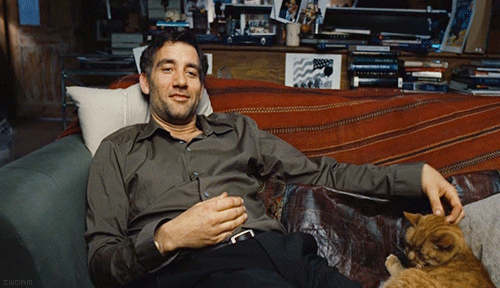We're nearing the end of the first week of this class. Your working hard on the tasks you've chosen for your "Digital Creativity" module, so for the final day of new material for the week, I want to take a unified look at digital creativity in some different manifestations.
Goals
For today's work, you should complete the following tasks
- Explore genres of creative digital work other than the one you're focusing on
- Continue working on your module
- Watch the videos I've posted
What is Digital Creativity?
Broadly, I define digital creativity as any kind of original expression that relies on digital tools for its form or content. Others might add works that rely on digital networks for connecting those works to an audience. The conversation around digitally creative work needs to look at how we can understand the unique and essential differences that digital technology can provide when we work with these platforms.
This is something we can discuss best with a few examples, so for each of the four modules I've asked you to choose from for this first round, I'm going to provide one or two examples.
Please discuss and analyze these in the #general-chat channel of Slack. Focus on what makes these examples unique, especially how their unique qualities are tied to capabilities that are specific to their digital platform.
Example 1: Animated GIF
Check out the Tumblr blog, "If We Don't, Remember Me", which hosts elegant, perfectly-looped "cinemagraphs" from films, including the example below from Children of Men. How are these GIFs different from a clip of the same scene in the movie?

If you're doing the GIF module, can you make something like this? Now that it's relatively easy to make GIFs from videos, what kind of work would you need to do to make something like these?
Example 2: Creative Coding
Working with code to produce something creative can take many, many forms. Twitter Bots are nice because they're relatively accessible and easy to understand. Plus, there are many ways to make an interesting Twitter bot. Consider two examples made by Everest Pipkin:
"Tiny Star Field (@tiny_star_field)"
✫
— ⋆ (@tiny_star_field) June 28, 2018
✦ * ✦ ✵
*
·
˚ ✹ .
.
. · *
"Abolish ICE Now (@Abolish_ICE_Now)"
This is Fairfax County Adult Detention Center. It holds immigrants in detention at 10520 Judicial Drive, Fairfax, VA. Its last inspection rating was 'Acceptable'. Fairfax has a population of 23,010 and an elevation of 377.62 ft. Homes are 2.8% vacant, 38% rented, and 59.2% owned. pic.twitter.com/FT9vUyOASY
— Immigration Detention Facilities Bot (@Abolish_ICE_Now) June 28, 2018
These are both "bots", but clearly they're doing something different. The latter is what you might call a "bot of conviction" because it's trying to make a point. Can you compare these bots in terms of how they rely on the features that define Twitter -- brevity, accessibility, repetition, etc.?
If you're working on this module, does your project have an argument to make, or is it purely aesthetic?
Example 3: Weird Internet Stuff
(a.k.a. "New Aesthetics")
Here's an Instagram account, "GlitchArtistsCollective" that hosts glitch art by different artists. What's your favorite recent post? Why? How are these artists producing these images?
Example 4: Interactive Fiction
To get to know this genre, take a look at one of last year's winners from the Digital Knowledge Center's Digital Project Contest. It's an exploration narrative that Nelia-Sol White built in Twine called "Left". (Note: This work contains some descriptions of violence.)
How does Nelia-Sol use your choices to immerse the reader/player in the narrative? If you're working on the interactive fiction module, what choices are you giving to your reader/player?
Working on Your Module
In this online class, I take for granted that many students will navigate the material at their own pace. At the same time, I do like to give a sense of where you should be now so that you're going to be prepared to move on to what comes next.
In terms of the module work, you should now be in Phase 2 of the steps described in the general information for modules.
To answer a couple of questions I've gotten, bear in mind that the "Suggested Tasks" are just that: suggestions. You can choose to do some, all, or none of them, so long as you explore whichever type of digital creativity that module focuses on, and so long as you produce some kind of artifact as part of your exploration.
All told, your module work should include:
- An introductory "Why this matters" post
- A concluding "What I learned" post
- Contributions to Slack while you're working
- A short video report on what you did and learned (no longer than 90 seconds, please!)
Of course, if you have questions about any of the above, please ask! And try to have it all completed by Midnight, Friday, May 24.